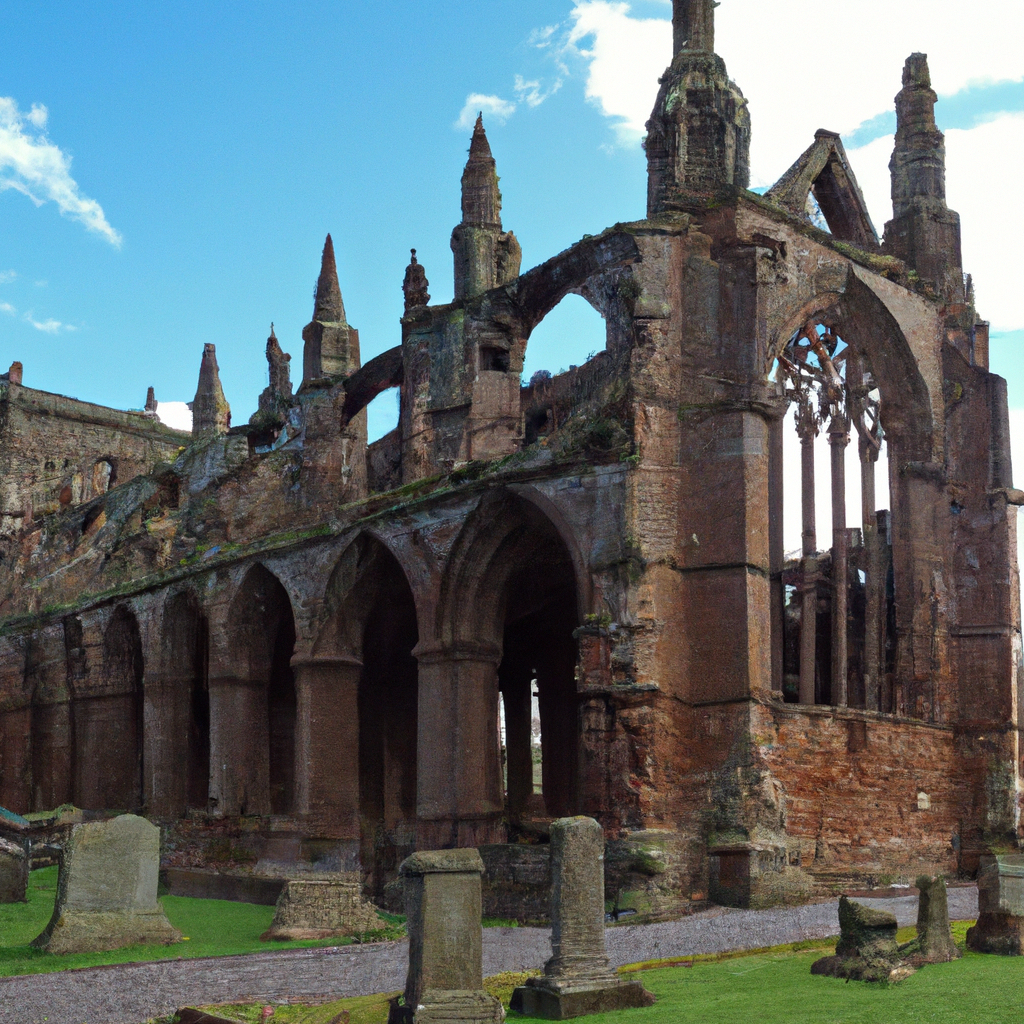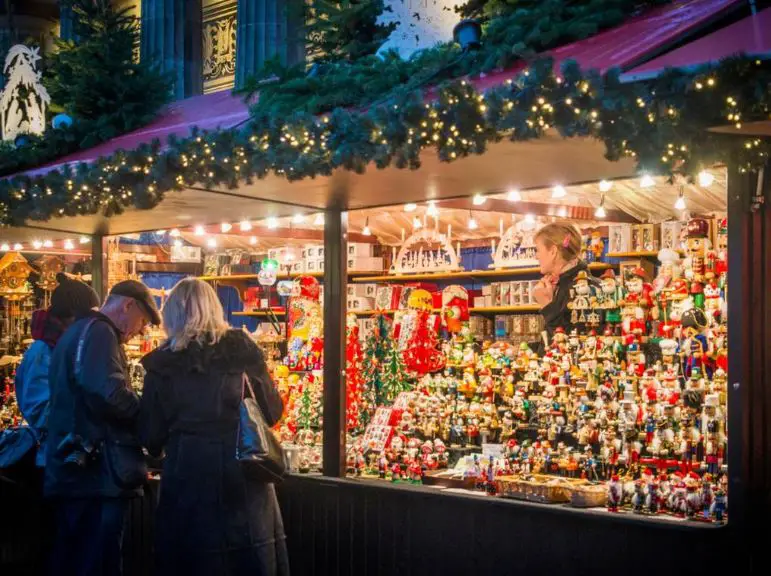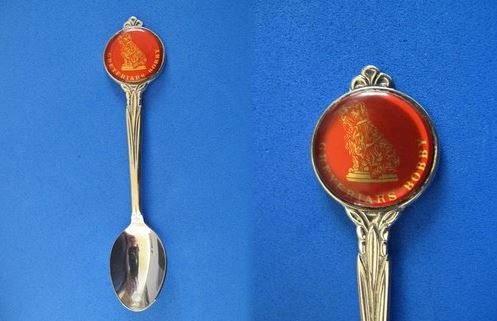Melrose Abbey is an ancient site of a former Cistercian Monastery nestled in the Borders region of Scotland. Not only is it famous for its romantic ruins but also for its mysterious, horrifying and paranormal activities associated with it. Explore this 12th century monument shrouded in folklore and secrets of horror and hauntings in this blog.
Horror Story of Melrose Abbey
The locals of Melrose Abbey claimed to have seen strange apparitions in and around the ancient abbey, most of which were pale, gaunt, and shrouded in grey cloaks. One report even spoke of a hooded figure with no eyes— its skull replaced by a single pitch-black void.
Rumors of the dead still walking its hallowed grounds were no longer confined to hearsay and had caught the attention of the national press. Newspaper reporters and journalists from all over the country descended on Melrose Abbey to uncover the truth.
When they arrived, the visitors were met by an unfamiliar atmosphere of dread, as if the very air around the abbey had been filled with fear and paranoia. All the windows were boarded up and the door was barred shut— no one had lived at the abbey for over a hundred years.
The greatest mystery of all was the legend of the Grey Friar— a wraith-like spirit that reportedly roams the halls of the abbey late at night, and is often seen near the monument of the same name. Those who have seen the Grey Friar claimed to have heard the mournful howl of a woman emanating from it, and some reported seeing chains clinking as it dragged its feet across the stones.
Legend has it that the Grey Friar is the reanimated corpse of Lady Isabella, a woman of high rank who was buried within the abbey walls after she died of a broken heart. It is said that her spirit still wanders the halls of the abbey, a bittersweet reminder of a lost love.
History & Information of Melrose Abbey
Melrose Abbey is a ruined monastery in Melrose, Scotland, near the River Tweed in the Borders. It was founded in 1136 by Cistercian monks on the request of King David I of Scotland and was head of the Cistercian order in Scotland from that date until the suppression of the abbey under the instruction of Cardinal David Beaton in 1545.
The abbey was laid out in the form of a St. John's cross. It was built of sandstone blocks that were hewn on the spot with ashlar dressing. Architectural details were mostly in a late Norman or Romanesque style. Fragments of architectural features still remain including rounded arches over doorways and windows, and also pinnacles and ornate carvings.
The most famous feature of the abbey was the heart of King Robert the Bruce, believed to have been buried at the abbey in 1329. Of the original abbey buildings, the only accessible portion remaining is the monks' dormitory. A four-galleried cloister still stands adjacent to the Abbey Wall and was added in the late fifteenth or early sixteenth century. A late fifteenth-century extension of the east arm of the cloister complex is still standing.
The abbey was absorbed into the Wars of Scottish Independence, when it was damaged and razed by commanders acting under orders from Edward I of England. In 1322, the building was attacked by English forces, and a part of it was burned. It was extensively altered and reconstructed by the Cistercian architect, Thomas Merton of Melrose, in the fourteenth and fifteenth centuries.
In the late sixteenth century, the abbey fell into disuse and was used as a quarry to build a nearby manor house. By the eighteenth century, the abbey had suffered such extensive damage that it was no longer recognizable. In the nineteenth century, the abbey was sold to the Duke of Buccleuch, who initiated a restoration of the buildings.
Today, much of the original architecture and decorative details of the abbey have been restored, and the abbey is surrounded by a pleasant parkland, providing a tranquil spot for visitors. It is now a popular tourist destination and is listed as a Scheduled Ancient Monument.
Paranomial Activity of Melrose Abbey
Melrose Abbey is a significant site in the Scottish Borders and has been part of a thriving monastic and cultural landscape since its establishment in 1136. It offers a rare opportunity to explore these rich spiritual, archaeological and architectural connections through an array of activities, both onsite and off.
Melrose Abbey offers a variety of educational activities and events through its Interpretation Centre and Visitor Centre. You can learn about the monastic history of the Abbey, explore its breathtaking grounds and buildings and learn about the Abbey’s role in the medieval period. The Interpretation Centre also offers a range of displays and exhibitions, while the Visitor Centre gives visitors the chance to explore the Abbey’s impressive interior.
Melrose Abbey also offers guided tours of the grounds and buildings, with experienced local guides providing insight into the Abbey’s medieval history and the lives of the monks who resided there. The Abbey also offers a range of workshops and talks throughout the year, giving visitors a greater understanding of the abbey’s cultural heritage.
The Abbey also hosts a range of events, such as story-telling, music and theatre performances, while the grounds have been used for traditional fairs and festivals since the 12th century. The Abbey also hosts a vibrant array of exhibitions, showcasing local art and crafts.
In summary, Melrose Abbey offers a range of educational activities, tours, workshops, talks and events that promotes the Abbey’s historical and cultural significance. Visitors can explore the grounds, take part in guided tours, learn about the past through exhibitions, take part in traditional fairs and festivals and take part in creative activities.
Experience of people & Reviews of Melrose Abbey
Melrose Abbey is one of Scotland's most iconic destinations. People who have visited the Abbey marvel at the intricate details and beauty of the Celtic cross-shaped church. They report that theology experts have said the structure was built as a tribute to Cistercian monks in the late 12th Century, but archaeologists have recently dated the foundation to slightly prior. People who visit experience a deep sense of awe and wonder at the impressive structure. The visage is definitely one of the highlights of the area according to visitors.
Many people who have visited Melrose Abbey have consistently given the location the highest ratings and reviews for its stunning architecture, peaceful atmosphere, and historic importance. One of the highlights is the ability to take time out of a hectic schedule and instead spend time meandering and admiring the details of this classic abbey. Visitors also report that it is a great place to learn more about medieval history and architecture. People especially enjoy visiting the cloister and the graveyard, both of which offer a unique experience that one can’t find anywhere else. Generally, people who have visited the Abbey and seen it in person describe it as an excellent experience that they would highly recommend to everyone.
FAQ'S of Melrose Abbey
Q1. Where is Melrose Abbey located?
A1. Melrose Abbey is located in Melrose, Scotland.
Q2. What is the history of Melrose Abbey?
A2. Melrose Abbey was founded in 1136 by David I. This Cistercian Abbey was home to the monks of the Order of Cistercians of Strict Observance (OCSO) until its dissolution in 1590.
Q3. How do I get to Melrose Abbey?
A3. You can get to Melrose Abbey by taking the A68 road from Edinburgh or the A1 from Newcastle. There is also a regular bus service from Edinburgh and other Scottish towns.
Q4. Is Melrose Abbey open to the public?
A4. Yes, Melrose Abbey is open to the public with an admission fee.
Q5. What can I find inside Melrose Abbey?
A5. Inside Melrose Abbey you can find beautiful stained glass windows, various chapels, a refectory, and an impressive chapter house.
Have you ever explored horror places in the world? If not, then you can explore now.









